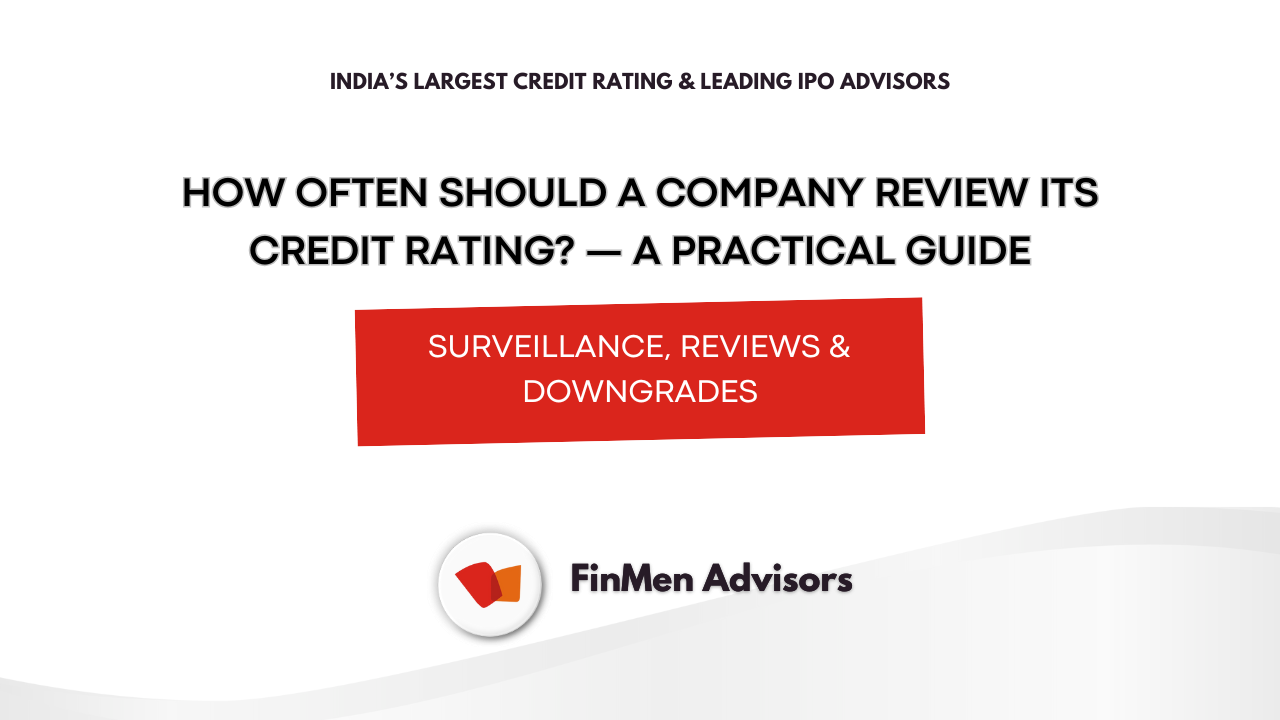Introduction
A credit rating is not a one-time stamp of approval — it is a forward-looking opinion that needs to reflect your company’s current and future financial strength. Companies often ask: How often should we review our credit rating? The short answer is — continuously.
In today’s fast-moving financial markets, regular rating reviews can mean the difference between smooth access to capital and unexpected funding roadblocks.
Why Frequency Matters
Credit ratings directly impact borrowing costs, investor trust, and market perception. A rating that does not capture your current position may:
- Lead to higher financing costs.
- Cause downgrades that surprise lenders and investors.
- Miss opportunities for an upgrade, even if performance has improved.
Ratings are living instruments — they must reflect the latest developments in your business and sector.
How Rating Agencies Monitor
Credit Rating Agencies (CRAs) follow three types of monitoring:
- Continuous surveillance – ongoing tracking of news, financial disclosures, and industry signals.
- Periodic reviews – typically once a year, with more frequent reviews for high-risk or active issuers.
- Event-driven reviews – immediate reassessment when material events occur (large M&A, refinancing, covenant breaches, litigation, etc.).
Knowing this helps companies align their own review schedule with agency expectations.
Recommended Review Cadence
| Situation | Internal Review Cadence | External CRA Review |
| Stable, investment-grade company | Monthly KPI monitoring; annual review | Annual CRA review |
| Leveraged / cyclical / SME | Monthly KPIs; semi-annual review | Before refinancing or if metrics shift materially |
| In transaction phase (IPO, bond issue, M&A) | Weekly to bi-weekly monitoring | CRA review 90–120 days before issuance |
| Under financial stress | Daily/weekly cash monitoring | Immediate CRA review with mitigation plan |
| Rapid-growth / high capex | Monthly KPIs + quarterly scenario reviews | CRA review when leverage or capex materially increases |
Triggers for an Immediate Review
A company should request or prepare for an urgent review if:
- There is a covenant breach or risk of breach.
- Major debt refinancing is due within six months.
- A large acquisition or divestment is announced.
- Significant financial deterioration occurs.
- There is regulatory or legal action impacting operations.
- Fraud, audit restatements, or governance issues emerge.
What to Include in an Internal Rating Review
A structured review pack makes both internal monitoring and CRA interactions smoother. Include:
- Executive summary (strengths, risks, mitigation).
- 3-year financial projections with stress scenarios.
- 12–24 month cash-flow forecast.
- Debt schedule and covenant tracker.
- Key industry and operational KPIs.
- Governance disclosures (board minutes, auditor notes).
Best Practice Timeline for Refinancing or Issuance
- 180 days before issuance — begin internal review and scenario testing.
- 90–120 days before issuance — engage CRA for a formal review.
- 45 days before issuance — finalize documentation and disclosures.
This prevents last-minute surprises and strengthens market confidence.
Who Should Own the Process?
- CFO / Head of Treasury — overall rating strategy.
- FP&A — financial projections and scenario testing.
- Legal & Compliance — governance and disclosure.
- Investor Relations — communication with CRA and investors.
FAQs
Do credit ratings expire?
No. Ratings remain valid but are continuously monitored and updated as needed.
Can I request an upgrade proactively?
Yes. If your performance improves significantly, you can request a review.
How early should I contact a CRA before a bond issue?
At least 90–120 days in advance.
Review Checklist
- Monthly KPIs (revenue, EBITDA, liquidity, leverage).
- Updated debt schedule with covenants.
- Stress-tested financial forecasts.
- Governance and compliance documents.
- CRA liaison contacts.
Conclusion
Credit ratings are not static — they evolve with your company. Annual reviews are the minimum, but in dynamic industries or during major corporate events, semi-annual or event-driven reviews are essential.
At FinMen Advisors, we help companies set the right review cadence, prepare robust rating packs, and engage rating agencies effectively. That’s why we are recognized as India’s Largest Credit Rating Advisors and Leading IPO Advisors.


